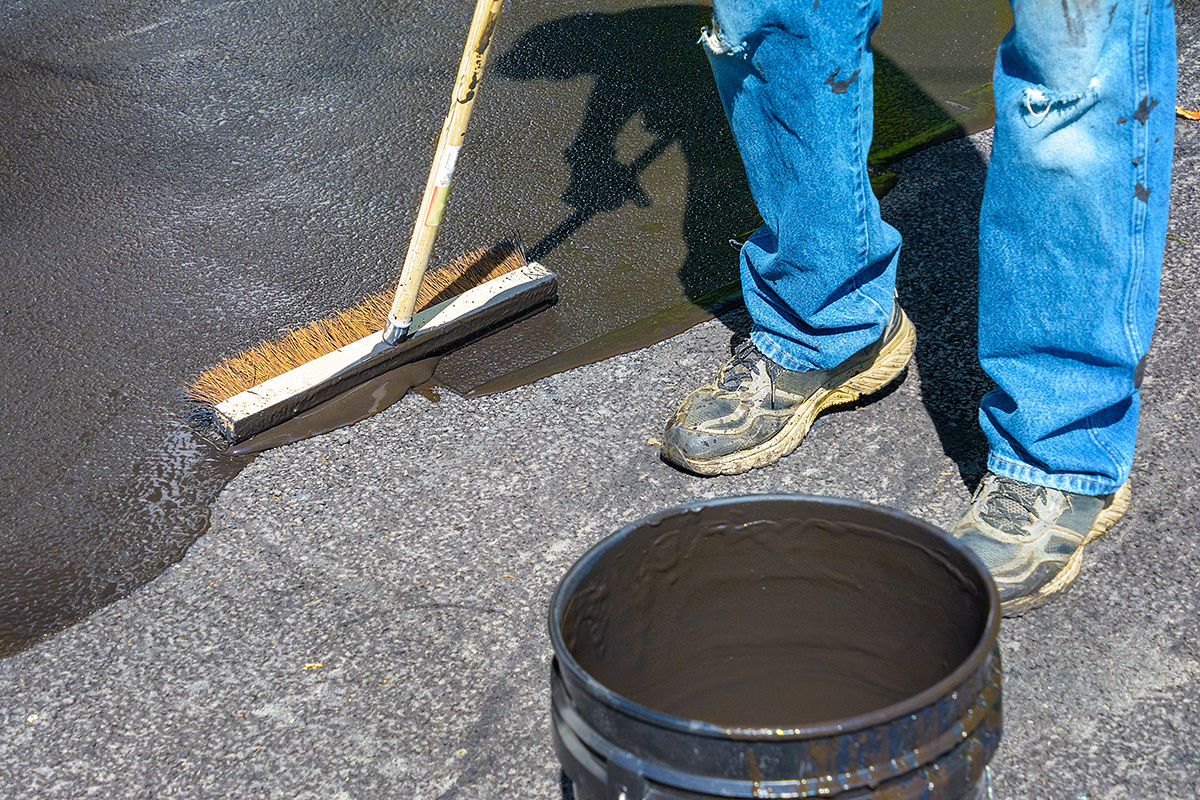Release the Prospective: Regrading and Asphalt Sealing for Industrial Spaces
Release the Prospective: Regrading and Asphalt Sealing for Industrial Spaces
Blog Article
Hot Mix Asphalt: A Sustainable Service for Pavement
Warm Mix Asphalt (HMA) has actually emerged as a leading lasting option for sidewalk options, providing a myriad of ingenious modern technologies and ecological benefits. As the demand for environmentally friendly building and construction techniques grows, discovering the nuances of HMA's sustainability can give useful understandings into the future of sidewalk services.
Ecological Benefits of Hot Mix Asphalt

Additionally, Warm Mix Asphalt helps to alleviate urban warmth island results. Its dark color takes in sunshine, decreasing the quantity of heat mirrored back into the ambience compared to lighter-colored pavements. This can decrease ambient temperature levels in urban areas, lowering the demand for cooling and ultimately minimizing power usage.
In enhancement, Hot Mix Asphalt adds to improved stormwater management. Its permeable nature enables water to charge and infiltrate the pavement groundwater materials, minimizing drainage and the threat of flooding. These environmental benefits make Hot Mix Asphalt a sustainable choice for paving highways and roads.
Energy Efficiency in HMA Production
Is power effectiveness a vital aspect in the production of Hot Mix Asphalt (HMA)? Energy plays a considerable role in the production of HMA, impacting both price and ecological sustainability. One key element of energy performance in HMA manufacturing is the use of warm mix asphalt (WMA) modern technologies.
Furthermore, innovations in plant innovations have caused even more energy-efficient HMA production procedures. Modern plants are developed with features like recycled asphalt pavement (RAP) processing capacities, reliable burner systems, and enhanced insulation, all adding to power savings. By optimizing power usage in HMA manufacturing, the market can lower its carbon footprint while keeping top notch pavement products. Power effectiveness is, therefore, a critical consideration in ensuring the sustainability of Hot Mix Asphalt manufacturing.
Recyclability of Hot Mix Asphalt
The recyclability of Hot Mix Asphalt (HMA) is a pivotal facet of its sustainability and lasting ecological effect. HMA is among the most recycled materials in the United States, with over 100 million lots of recovered asphalt pavement (RAP) being recycled every year in new sidewalk construction. Reusing HMA supplies a number of ecological advantages, such as decreasing the demand for virgin products, decreasing power intake throughout production, and lowering the amount of waste sent out to land fills.
The process of reusing HMA includes grating the existing sidewalk, squashing it into smaller items, and blending it with brand-new aggregate and asphalt binder to create a recycled mix. Overall, the recyclability of HMA plays a substantial duty in promoting sustainable practices within the pavement market.

Long-Term Efficiency of HMA
Asphalt sidewalks demonstrate resilience and durability over an extended period, reflecting the long-lasting efficiency of Hot Mix Asphalt (HMA) The durability of HMA can be credited to its capability to stand up to heavy traffic loads, severe climate condition, and the effects of aging. Researches have actually revealed that properly designed and correctly built HMA pavements can last for twenty years or regrading more with routine maintenance. The secret to maximizing the lasting efficiency of HMA depends on making use of premium try here materials, adhering to finest practices in construction, and carrying out effective maintenance approaches. Proper drainage, regular evaluations, and timely fixings are crucial for protecting the architectural integrity of HMA pavements gradually. Additionally, innovations in HMA innovation, such as making use of polymer-modified binders and cozy mix asphalt, have additionally boosted the longevity and longevity of HMA sidewalks. By prioritizing high quality building and construction and upkeep practices, HMA remains to prove itself as a affordable and sustainable option for resilient pavement infrastructure.

HMA: Longevity and Sustainability
Showing both sturdiness and sustainability, Hot Mix Asphalt (HMA) has become a foundation in the construction of resilient pavement frameworks - angled parking. HMA's longevity stems from its capability to withstand hefty lots, rough climate condition, and high web traffic quantities, making it a reliable choice for roads, freeways, and airport paths. The structure of HMA, which typically includes accumulations, binder, and filler, plays an important duty in enhancing its durability and resistance to deterioration
Furthermore, HMA's sustainability depends on its recyclability and energy-efficient production procedure. The capability to reuse recovered asphalt sidewalk (RAP) in new HMA mixes minimizes the need for virgin materials and reduces the ecological effect of pavement construction and maintenance. In addition, the energy effectiveness of creating HMA exists in its lower blending temperatures contrasted to other sidewalk materials, resulting in lowered power usage and greenhouse gas exhausts.
Conclusion
In final thought, warm mix asphalt (HMA) provides a sustainable option for sidewalk with its eco pleasant characteristics. HMA's recyclability, power efficiency in production, and lasting sturdiness make it a green option for road construction.
HMA is one of the most recycled materials in the United States, with over 100 million heaps of reclaimed asphalt pavement (RAP) being recycled every year in brand-new pavement building.The process of reusing HMA includes crushing the existing pavement, crushing it into smaller sized items, and blending it with new aggregate and asphalt binder to develop a recycled mix.Asphalt sidewalks demonstrate durability and durability over an extensive period, mirroring the long-lasting efficiency of Hot Mix Asphalt (HMA) Additionally, advancements in HMA innovation, such as the usage of polymer-modified binders and warm mix asphalt, have even more enhanced the resilience and durability of HMA sidewalks. The capacity to recycle redeemed asphalt sidewalk (RAP) in brand-new HMA combinations lowers get more the need for virgin materials and lessens the ecological impact of pavement construction and maintenance.
Report this page